#northern sea nettle
Explore tagged Tumblr posts
Text





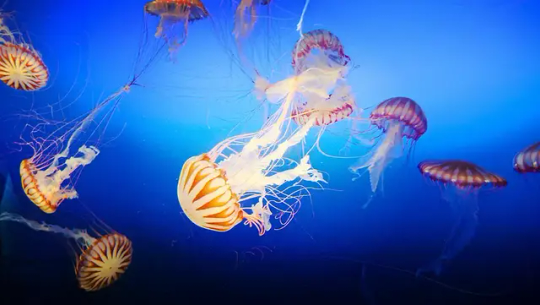

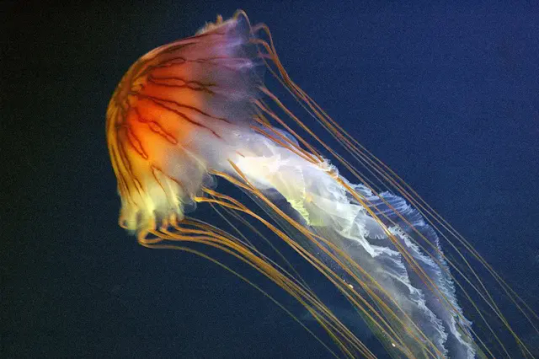




Медуза компасная.
Chrysaora melanaster (лат.) — вид дискомедуз из рода Chrysaora семейства Pelagiidae, водится в водах Японского и Охотского морей и у тихоокеанских берегов Курил. В англоязычных странах также известна под названиями северная морская крапива (англ. northern sea nettle) и коричневая медуза (англ. brown jellyfish), раньше ещё одним английским названием вида было название японская морская крапива (англ. Japanese sea nettle), теперь оно используется только по отношению к виду Chrysaora pacifica.
Компасная медуза обладательница длиннющих щупалец, которые вырастают до 4,5 метров и их максимальное количество составляет 24 штуки.Максимальный диаметр зонтика достигает 630 мм. Обитает на глубинах до 100 м, где питается веслоногими ракообразными, аппендикуляриями, мелкими лучепёрыми рыбами, крупным зоопланктоном и другими медузами . Это одиночная, свободноплавающая медуза.
Compass jellyfish.
Chrysaora melanaster (lat.) is a species of disc jellyfish from the genus Chrysaora of the family Pelagiidae, found in the waters of the Sea of Japan and the Sea of Okhotsk and off the Pacific coast of the Kuril Islands. In English-speaking countries, it is also known as the northern sea nettle and brown jellyfish. Previously, another English name for the species was the Japanese sea nettle, now it is used only in relation to the species Chrysaora pacifica.
The compass jellyfish has very long tentacles that grow up to 4.5 meters and their maximum number is 24 pieces. The maximum diameter of the umbrella reaches 630 mm. It lives at depths of up to 100 m, where it feeds on copepods, appendicularians, small ray-finned fish, large zooplankton and other jellyfish. It is a solitary, free-swimming jellyfish.
Источник:://ujnosahalinsk.bezformata.com/listnews/gigantskaya-kompasnaya-meduza-popala/111745785/, /rtraveler.ru/photo/1381489/, /www.vityaz-gamov.ru/info/photo/morskie_zhivotnye/a_shpatak_-kompasnaya_meduza1/,/ru.pinterest.com/pin/533184043360978310, //ru.wikipedia.org/wiki/Chrysaora_melanaster.
#fauna#video#animal video#marine life#marine biology#nature#aquatic animals#sea creatures#ocean#sea#jellyfish#Chrysaora melanaster#Northern Sea Nettle#plankton#animal photography#beautiful#nature aesthetic#видео#фауна#природнаякрасота#природа#океан#море#медуза#Компасная медуза#планктон
172 notes
·
View notes
Text


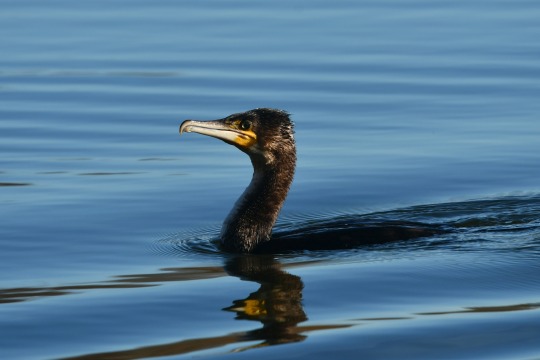

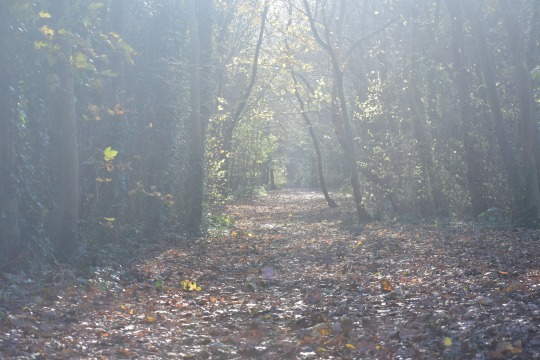

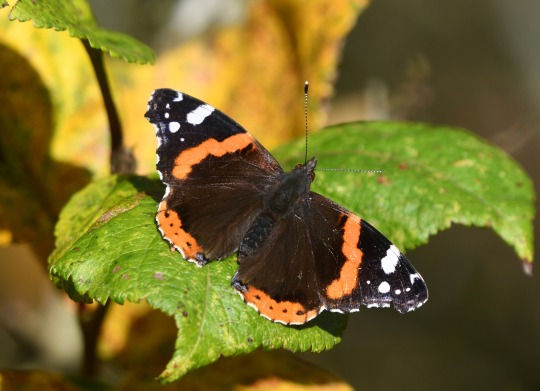

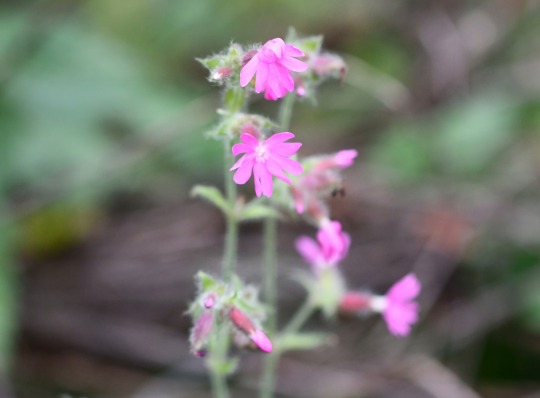
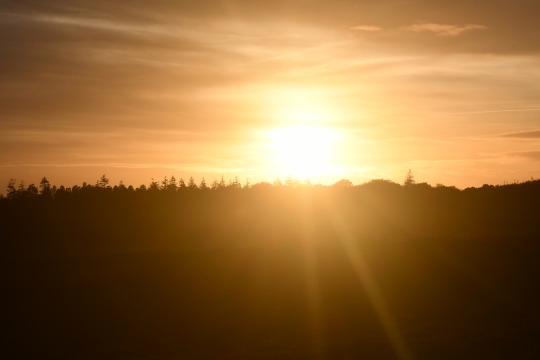
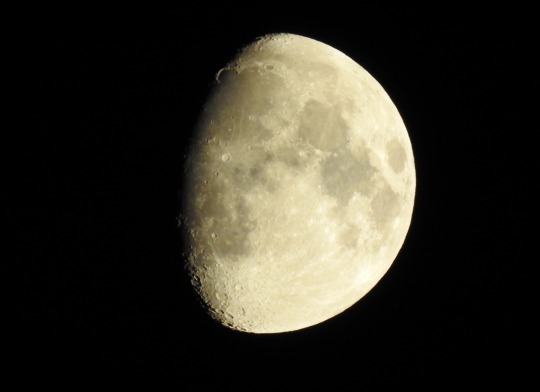
Eleven of my favourite photos I took in November 2024 and month summary
The photos are of; Great White Egret at Testwood Lakes, Snow Bunting at Sandy Point on Hayling Island, Cormorant at Lakeside Country Park, white deadnettle and view at Lakeside, Fallow Deer at Bolderwood in the New Forest, Red Admiral and shaggy scalycaps at Lakeside, red campion at Testwood Lakes, a characteristic sun going down whilst out view at this time of year at Pig Bush in the New Forest and the moon out the front.
November was another fantastic month of birds for me with a major highlight coming soon into it getting sensational views of the sumptuous Snow Bunting at Sandy Point and another fine species seen late on with only my third ever Red-necked Grebe seen at Weston Shore today. Other key birds seen this month included the seasonal delight of Redwings, Raven, Green Woodpecker, Ring-necked Parakeet, Greenfinch and Siskin. Glorious Great White Egret views, Grey Heron, Little Egret, Lapwing, Oystercatcher, Curlew, Wigeon, Teal, Shoveler, Pochard, Red-crested Pochard, Goosander and Egyptian, Greylag and Brent Geese brought a sprinkling of blissful wading birds and waterfowl to observe, evocative of autumn and winter for me. This month I also enjoyed seeing Buzzard, Red Kite, Jays, Kingfisher including at Winnall Moors and Lakeside in another strong month I had for them, Cormorant, Great Northern Diver, Slavonian Grebe, Mistle Thrush, Blackbirds, Robin, Great Tit, Blue Tit, Long-tailed Tit, Wren, Pied Wagtail and Tufted Ducks and Mute Swans which were especially nice to see on patch at Lakeside and a young one in Winchester respectively. Common Gull was another key bird seen this month with one returning to Lakeside which is always thrilling to see, with Herring Gulls enjoyed there too. I also took pleasure in some great Winchester Peregrine and Grey Wagtail and Lakeside Great Crested Grebe, Coot and Moorhen views this month. A dashing male Sparrowhawk at home was another special bird to see.
I got fine and immersive views of Fallow and Roe Deer this month, seeing a fair few New Forest Ponies, Grey Seal, Grey Squirrels and Brown Rats too. There was still some butterfly interest this month with some great views of a Red Admiral at Lakeside. Bee, wasp and hoverfly including marmalade hoverfly were also nice to see with Grey Silverfish and spiders seen well at home. It was a good month for plants still with a fair bit seen flowering including knapweed, marsh thistle, red campion, herb-Robert, hedgerow crane’s-bill, periwinkle, hedge woundwort, red clover, some early winter heliotrope and violet at and near Lakeside, hogweed, wild carrot, ragwort, petty spurge, dock, white deadnettle, stinging nettle, red deadnettle, groundsel, ivy-leaved toadflax, viper’s-bugloss, scentless mayweed, sea mayweed, oxeye daisy, daisy, dandelion, oxtongue, sow thistle, buttercups, ivy, rock samphire, red valerian, evening primrose, gorse, common heather, bell heather and cross-leaved heath. I enjoyed observing seed heads a lot this month with teasel, fleabane, spear and creeping thistle, wild carrot, hogweed, old man’s beard, purple loosestrife and hemp agrimony standing out and leaves including common toadflax, thistle and ferns. Apple, privet berries, rose hips and holly berries led the way for fruit seen.
Fungi once again played a key role in my month as I was captivated by enigmatic shaggy scalycaps and intricate patterns of turkey tail at Lakeside with the latter seen elsewhere too. Crowded parchment, waxcaps, dung-loving deconica, possible winter russula, pleated inkcap, earthball and parasol in a good autumn I’ve had for them and a notable new one for me seen a couple of times in the New Forest handsome club were other highlights. I also liked seeing moss and lichen including oakmoss. I took in a lot of charming landscape and sky scenes this month again with the splendour of autumnal colour continuing to grip the landscape giving way to morning frost scenes as winter crept in towards the end. Sunsets, sunrises and some great full moon scenes were wonderful to take in this month too alongside lake, wetland, coastal and New Forest woodland and heath vistas. Wishing you all a great December.
#november#snow bunting#cormorant#great white egret#kingfisher#red admiral#shaggy scalycap#new forest#hayling island#hampshire#lakeside country park#eastleigh#winnall moors#testwood lakes#winchester#white deadnettle#red campion#europe#england#uk#earth#nature#reflections#photography#walking#birdwatching#moon#sunset#home
8 notes
·
View notes
Text
Common Symbols and Motifs in Heraldry, clothing and art part 2/?
Part one: Elves of Aman World Building Masterlist
I’m going to do the Sindar on this post though I might do the Falathrim separately and the Nandor and Avari on the later ones then go to humans! So I might increase the number of these more.
I will also probably add to this list just as I have the other one
Sindar of Doriath
Nightingales Generally ascribed meanings: the Queen Melian, song, love and devotion, bonding, joy
Bracken fern and fiddleheads fern Generally ascribed meanings: geometry and order
Beech Leaves: Generally ascribed meanings: Abundance, generosity, resourcefulness
Holly leaves Generally Ascribed Meanings: honor, defense, resilience
Oak leaves Generally ascribed meanings: Friendship, loyalty
Niphradel and snowdrops Generally ascribed meanings: purity, youth, innocence, cycles
Elanor Generally ascribed meanings: light, growth, curiosity
Bluebells Generally ascribed meanings: spring, fleet footedness
Elm leaves Generally ascribed meanings: the king, service, steadfastness
Sindar of Mithrim
Nettles, stem, leaves and flowers Generally ascribed meanings: nettles are used in the northern Sindar culture in a variety of ways including fiber for fabric, eating, and medicinal teas. Their appearing in heraldry, art and symbolism is usually believed to mean resilience, the change of winters to spring, and the earths resources
Clouds Generally ascribed meanings: the heavens, tranquility
Outline of mountains Generally ascribed meanings: history, family, honesty
Wolf's Bane Generally ascribed meanings: Lore, knowledge
Blue bellflower: Generally ascribed meanings: color, joy, exploration
Trout Generally ascribed meanings: home, water
Lake birds (herons, swans) Generally ascribed meanings: grace, flight, legacy
Lake birds (ducks, loons, teals) Generally ascribed meanings: cycles of life and predation, respect for land
Fir tree Generally ascribed meanings: shadow and light, truth
Sunflowers Generally ascribed meanings: joy, sun, day
Sindar of Nevrast (non Falathrim) Aquatic birds one (ducks/shelducks/grebe/teals/eider/sea ducks) Generally Ascribed meanings: stability, peace, family
Aquatic birds two (cranes/egrets/herons) Generally ascribed meanings: grace, skill, aptitude, seeking
Aquatic birds three (loons, crakes, rails, etc) Generally ascribed meanings: song, mystery, change
Ripples on a lake Generally ascribed meanings: the world, the ages, time
The clifflines of Nevrast: Generally ascribed meanings: strength, wisdom
Marsh grasses: Generally ascribed meanings: roots, abundance
Sea Lavender Generally ascribed meanings: the lands and sea, gentleness
Sunflower or daisy
Generally ascribed meanings: resilience, loyalty
General among the Sindar of Beleriand:
hummingbirds generally ascribed meanings: pollination, flora and fauna, wonder
butterflies and dragonflies generally ascribed meanings: change and transformation, fragility and beauty
willow trees generally ascribed meanings: peace, connection to Ulmo, mystery, prophecy
Obviously this isn't a complete list as many, many species of flora and fauna have their own meanings! Please feel free to ask about any or ask any world building questions! I hope this is ok!
Next post
29 notes
·
View notes
Text
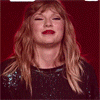
hello hello tags, admin salma here! big reputation, big reputation; jaehaerys targaryen has a big reputation. here at dance of dragons, queen daenaerys targaryen just lost her throne of the crownlands and the stormlands to her cousin, the green prince jaehaerys. meaning technically, the greens won the dance of dragons. considering jaehaerys has been planning this for years, his conquering has made ripples across the rest of westeros.
other than that, here are the current plots per region:
the westerlands: king tyland lannister's reformation and breaking away from the faith of oldtown, denouncing the high septon has resulted in bloodshed on the steps of the starry itself.
the reach: recently emerging from a civil war between the tyrell brothers, king cedric tyrell is working to maintain naval dominance at sea whilst also dealing with a high septon in oldtown keen on making enemies. internally, they also are handling tensions with the summer isles and lys.
the riverlands: following the betrayal of the eldest tully sister, king casimir tully finds himself at the end of lyseni wrath. what move will the riverlands take now?
the north: skagos, house bolton and house umber have united together to stand against king owen stark's 'southern' mentality, resulting in a bloody northern war that feels like nothing will be the same after the cries of war quieten.
the vale: after the discovery of nettles and sheepstealer in the mountains of the moon, will it be under the rule of cruel queen ravella that the threat of the mountain clans is over forever?
dorne: maintaining their close association with the free cities across the narrow sea, dorne has a new ruling prince: mors martell, who has a different vision for dorne than his father. and now, they have dragons on their borders to deal with.
thank you to our amazing plot mods for coming up with a plot based on the third crusade which seems to be impacting all the followers of the faith of the seven in westeros. we love using history and folklore as inspiration for plots here at dod.
our lore page breaks down key events of each region over the last two years. check out the navigation page to make it easier. and finally, our recent and most scandalous addition, the society page.
dance of dragons rp is set three years, in 143AC, after the end of our AU version of the dance of dragons, which lasted ten years in our verse. all the kingdoms have become independent, with two main exceptions: the stormlands bow to a targaryen king in kings landing, and the iron islands were buried under the revenge of the westerlands and the reach for thousands of years of sacking. rules can be found here, as can the application form. upon entry to the group, each new member is assigned a member of the admin team to help them settle and ask any questions to!
11 notes
·
View notes
Text
northern sea nettle! (chrysaora melanaster)


Floating
3K notes
·
View notes
Text
I am under the Seven stars. I am under the sky-boat afloat in the Milky Way. I am under the glowing hearth-fires of elders. I am under shining pebbles in the stream of time and timelessness. I am under the great snake who can poison or heal. I am under the sun making love with the day. I am under the moon’s life-giving womb.
I am moss-covered calcrete and sandy river silts. I am lichen, algae, fungi, puffball. I am mole-cricket, inch ant, worm-lizard, stumpy lizard, skink. I am coiled brown snake and tiger snake. I am maniacal cackle frog and common froglet. I am echidna. I am wallaby.
I am drooping sheoak, small sheoak, sticky hop-bush, and southern cypress pine. I am paperbark, bottlebrush, mallee gum, red gum and melaleuca. I am dryland teatree, white flowering teatree and spiny hakea. I am fig, almond, apple, lemon, lemon myrtle, pomegranate and plum. I am golden wattle, coastal wattle , small coastal dune wattle and northern wattle.
I am piyentak, nganangi, manguni, manthari, thalgi, kunduwi, yalkari, and bilbili.
I am flax-lily, pigface, stinging nettle, muntries, thistle, sweet apple-berry, weaving rushes and knobby club-rush.
I am ruby saltbush, climbing saltbush, coast bitter-bush, small-leaf bluebush, coast daisy bush and twiggy dais-bush. I am sticky New Holland daisy, yellow daisy and yellow star. I am boobialla, bower spinach, correa, climbing lignum, and rhagodia. I am Austral storksbill and Austral trefoil. I am wallaby grass, spear grass, veldt grass and buffalo grass.
I am oxalis, ox tongue, pigs ears and pussy ears. I am easter lily, and Xmas box. I am sea lavender, english lavender and french lavender. I am freesia, nerine, nasturtium, pelargonium, geranium, tree aeonium and sedum. I am highland rose, pink rose and rosemary. I am jonquil, jade plant and spider plant. I am amaranth and plantain. I am cemetery iris, medic, marsh-mallow and red hot poker aloe. I am cactus.
I am thorn-bill, stubble quail, silver eye and magpie. I am fairy wren, willy wagtail and grey fantail. I am mudlark, brown songlark, singing honey-eater and New Holland honey eater. I am feral pigeon, crested pigeon and bronzewing. I am wattle bird and blackbird. I am noisy miner and peaceful dove. I am black shouldered kite and brown falcon. I am marsh harrier and barn owl. I am welcome swallow, sparrow and crow.
I am tarantula spider and orb spider. I am red-back spider and black spider. I am slater and beetle. I am midge and mosquito. I am march fly, house fly and blow fly. I am butterfly and moth. I am blue striped bee, and honey bee.
I am living beings, standing since the beginning of time. I am invasive species that bylaws tell me to kill. I am repair species from the Ngarrindjeri nursery. I am species spread by seed. I am a politics of pollen.
I am a guest of the cycle of life, death and rebirth, living on Ngarrindjeri lands. I am bound to return under the earth.

0 notes
Text








Soleirolia soleirolii is a flowering plant in the nettle family. It has a number of common names, including baby's tears, angel's tears, peace in the home, bits and pieces, bread and cheese, Corsican creeper, Corsican curse, friendship plant, mind-your-own-business, pollyanna vine, Paddy's wig, and mother of thousands.
Order:Rosales
Family:Urticaceae
Genus:Soleirolia
This species is native to the northern (European) side of the Mediterranean Sea, in and around Italy, the Adriatic and Aegean regions and offshore islands; it has also been observed in the Azores and Corsica.
Used in habitats for diminutive reptiles, amphibians, and some invertebrates. It prefers shade and consistent to heavy moisture.
This species, the only member of the monotypic genus, Soleirolia, was named after the French army engineer and plant collector Henri-Augustin Soleirol by his fellow French naturalist Esprit Requien. Soleirol, an amateur botanist, originally collected the plant in Corsica.
47/22 Northcross dr, Auckland NZ
7PJC+M45 Auckland
-36.7183720, 174.7203656
наземные растения цветковые травы
0 notes
Photo
youtube
More Littoral Relaxocean: • 20 Minutes of Bio…
We filmed this video a few weeks ago along Cannery Row, just off the back deck of the Aquarium! These jellies are Pacific sea nettles, Chrysaora fuscescens—the same ones you may have seen on our Jelly Cam! ( • Live Jelly Cam - … )
Sea nettles are very seasonal here in Monterey Bay, usually showing up in mid to late summer, and sometimes in massive numbers that turn the water very spicy.
Sea nettles are plankton, meaning that they drift with ocean currents. “Plankton” isn’t a size thing, it’s a lifestyle. If you’ve got friends drifting through life with no real direction, then you know a plankter or two. Sea nettles are also planktivores, meaning they eat drifting critters, like tiny shrimps and larval fishes and other jellies.
Lots of animals are planktivores, and many animals eat sea nettles, from sunfish to sea turtles and even the blue rockfish in this video at 1:20—with one even thinking about enjoying a jelly donut for a second there!
Sea nettles are a type of jellyfish known as a scyphozoan, or “bell animal.” The top part here is the bell, housing the famous jelly of the jellyfish. Scientists call this the mesoglea, or “middle jelly”, because it's sandwiched between two layers of skin, the orange epidermis (outside skin) and the clearer gastrodermis, or stomach-skin. The frilly folds of gastrodermis behind those red stinging tentacles are the jelly’s mouth arms—essentially long lips that slurp up plankton soup as the jelly swims. (Heads up that jellies don't actually have "skin" like us, as they only have tissues and not organs.)
Watching jellies swim is simply mesmerizing—and there’s a lot going on with each ring of a jelly’s bell. Muscles contract against the mesoglea, accelerating the pulse to the thin edges of the bell like a whip, creating water currents that pull food toward the jelly’s mouth arms! A swimming jelly isn’t really trying to go anywhere, so much as it’s vacuuming up planktonic pieces of pie with every blobby scull—like if a lava lamp joined forces with a roomba.
There were some huuuuge sea nettles that day—the one at 2:03 had a bell almost two feet across! These open ocean beasts often show some wear and tear on their bells, battle scars from their long voyage through the inner space of planet ocean.
At the end of the video you'll find a northern kelp crab, Pugettia producta, hanging out in the giant kelp, watching current events go by… Solid plan if you’re feeling crabby.
On the way back to the Aquarium, little blubber bud came by to say hey—harbor seals are like curious cats in the kelp forest, sea lions are much more the “ocean doggos” you’ve heard about on the Internet. Ah yes, and then a few senorita cleaner wrasses came by to see if we needed any help tidying up the end of this video—thanks for the kelp!
We hope you enjoyed this dive in the Monterey Bay! Give us a like if you enjoyed this video and subscribe if you want to see more from us here. Thanks everyone, hope to sea you again soon here at the digital Monterey Bay Aquarium.







A few minutes of pelagic magic with wild sea nettle jellyfish, filmed just off the back deck of the Aquarium, for your littoral relaxocean needs!
youtube
Keep reading
1K notes
·
View notes
Text

At noon, parachutes fall from the sky, landing neatly at the feet of every tribute. It is a small strip of parchment, wrapped in ocean salt-brined twine like a tiny package. Tributes unfold the package to reveal a shard of colored sea glass. On the inside is a map and a simple note: The next step of your adventure lies in the dark cave’s depth; find your stone within the hour or meet your certain death.
All tributes have one hour to get to the cave on the shallow end of the northern island. Inset into the walls behind the skeleton are six notches where a full piece of matched sea glass will fit flush. Tributes must find their pair with the matching color, fit the shards together and place it into the wall.
A new passageway will open low in the cave wall here that will only admit the pair, and they must move quickly. Iron bars drop behind them once they enter– they have no choice but move forward and descend downward, further into the tunnel. At the end of a long, dark passageway, a simple wooden table and a stone bowl sits. Torchlight flanks the table, and in front of the bowl is another strip of parchment. It reads: If one wishes to proceed
They must perform a gruesome deed
A sacrifice of something dear
Shall be laid on altar here
A piece of body each as price
But in return, a reward worth twice
The first pair to add the correct items to the bowl are rewarded: the earth quakes, and the rock face behind the table splits again to reveal a stone staircase up to bright, warm sunshine. Tributes are released directly into the Oasis, and a basket of freshly-picked tropical fruits, nuts, and two small knives await them as reward.
The remaining tributes are not so lucky. They feel the same quake, but they are out of time. The passageway quickly fills with seawater pouring through the new cracks and tributes must backtrack and fight to wrench the iron bars open and slide under. It is possible, but they must be quick and clever. The exiting tributes will notice that the skeleton’s head has tipped backwards and his jaw hangs open in an eternal laugh.
THE PAIRINGS:
ARDEN and HELIOS are paired. They each have half of a square-shaped, pink piece of sea glass.
NETTLE and FLORA are paired. They each have half of a circular, blue piece of sea glass.
MARS and EZRA are paired. They each have half of a triangular, green piece of sea glass.
MERCURIA and BRAMBLE are paired. They each have half of a diamond-shaped, clear piece of sea glass.
CALLISTO and SLATE are paired. They each have half of an oval, yellow piece of sea glass.
[NPCs PHI SHING, DAVEY JONES, & BARLEY GROW are in their own group]
The winning team will be drawn at today’s death draw!
Time to next draw: 16 hours
0 notes
Text
Location "Wiki Pages": Marevi
—–
Debut: TBA
Location Influences: Atlantica (The Little Mermaid), Subnautica, Into the Deep (The Backyardigans), an underwater city Minecraft map
Ruler(s): Moonlily (queen), Nettle (king), Waterlily (crown princess)
Inhabitants: Waterlily, Shelltop, Spike, Marcella, Cream, Gabbro, Carla, Natalie, Aura, Basseel, Eliza, Cell, Manuel, Chrysa, mermaids, sea animals, sentient sea plants
Sublocations: Castle of Marevi, Vigra, Basacan, Lankep, Menthi, Gorel, Orenas, Promor, Negma Lagoon, Subra Atoll
—–
Marevi is one of the locations in the Unikitty: Big Bright World series. It is currently led by Queen Moonlily and King Nettle, although they consider themselves to merely be figureheads. It's a kingdom located on the ocean floor.
—–
Geography: Marevi is a lush undersea land located out in the open ocean. It plays host to multiple marine geographical features.
Towards the middle of the kingdom is Vigra, a green field of seagrass with large rocks and giant seashells scattered across it. It is where the Castle of Marevi is located. On one side, there is Basacan, a rocky, stony zone with a group of submarine volcanoes. There is also a kelp forest called Lankep, the kelp stalks of which grow along Marevi’s northern parts. In the southwestern side, there is a desert-like seabed called Orenas, where the sand is sparkly and yellow like gold. There is also Gorel, a colorful, populous coral reef that resembles a city. Marevi’s other provinces are Promor, its deepest, widest trench with a population of its own, and Menthi, a region of extensive ocean caves. Hours away from Marevi are Negma Lagoon and Subra Atoll, which are considered part of it.
Architecture: Buildings in Marevi are interiors built within coral, the sides of the cliffs, colossal seashells, or other naturally occurring habitats. This is so they can ensure that no harm is to come to their environment. They don't do construction work with anything except for stone, because stone is not a living thing. For this reason, residences like the Castle of Marevi are built entirely out of stone. Sand isn't a living thing either, so they make glass out of it for windows and skylights. Often, they like to dye the glass. It's very common for Marevians to decorate their homes, work and other places, inside and out.
Clothing: Marevi is generally warm according to Waterlily, so Marevians normally don't need to wear clothes. Many have skin on their bodies that act as clothing, with it being a different color than their faces. Some wear jewelry and hair accessories. Wristbands are also a very popular fashion choice. Marevi's traditional clothes are robes made out of light fabrics, with different sleeve lengths and hem lengths, that are patterned with nature-themed designs. When wearing the robes, Marevians also customarily wear makeup.
On their wedding day, Marevians’ families dress them in the clothes they’ll be married in. They can wear robes patterned with something in nature they connect with, or whatever they want to wear. They can also have their face decorated with makeup, if they so choose.
Marevians put their deceased people’s pieces in trenches, so they associate trenches with death. The traditional robes that funeral attendees wear have trench patterns on them. They are not the same robes worn by people from the volcanic biome, as those have sea volcano patterns. The robes can also have patterns of things that the dead person felt connected to.
Currency: Marevi uses shells, which are dome-shaped coins and bills made with plants, as its currency. The name comes from the dome shape of the coins, which resemble the shells of sea turtles and some sea shells.
Defense: There are swordspeople in Marevi whose job it is to keep beasts from destroying things in the kingdom, but they don't slay them. When a monster is destroying something, they either attempt to calm the monster down, or they look as intimidating as they can so they can chase the monster away. There are also strategists, but they come up with ideas to keep the people safe and protect the earth, not plan militaristic battles.
Education: Children in Marevi first attend a general school, where they learn life skills such as taking care of themselves and their living space. It teaches you all the things in life that you'll actually need to know. It also shows you how to be a decent person. After that, they can attend any school that will teach them what they're interested in. There are interest schools for athletics, food, language, visual arts, performing arts, science and more. They can go to one interest school, more than one, or just not go to any. The Marevian school year starts in the middle of spring and ends in the middle of fall.
Culture: The demonym for Marevi is Marevian. The name of the kingdom itself is pronounced MAR-eh-vee, while the denonym is pronounced mar-EH-vee-an.
Marevians are normally kind, courteous, friendly, and respectful of all living things in the world. They respect and care for all the living creatures in the sea, treating them like friends and family, and live in harmony with nature. A symbolic plant of Marevi is the white water lily. One managed to float out into the ocean long ago, inspiring the earliest Marevians to care for the world around them. They call it the Persistent Lily.
In Marevi, it’s not common for your name to be based on your species or what you are. It’s more commonplace for people to have surnames, which are what indicate their species. Sea urchins in Marevi are usually named after sharp objects or sharpness.
Earth Day is a very important holiday to Marevians, but it isn't observed the way it is in real life. They celebrate it by spending time with their family and being grateful for what's around them.
Instead of a stork delivering pieces to build children with, the pieces appear out of the earth.
Touching hands is a common and meaningful gesture to Marevians. It’s their way of saying that they acknowledge your presence, they care about you, and that you share the life of the world with them. It’s also a customary Marevian greeting.
Marevian New Year is celebrated at the start of spring on their calendar. It would fall between February 28 and March 3, which is when spring comes to Marevi. The people tidy up their homes and throw out things they don’t want anymore to show their growth from the past year. They also enjoy dancing and music from traditional bands.
Earth Day is a very important holiday to Marevians. They call it the Day of the Earth. It happens in the summer, when the ocean is the most fertile. They celebrate it by spending time with the people they love and trust and showing gratitude for the things around them. People also visit Queen Moonlily and King Nettle, who are called the Givers of Life, to thank them for sharing their knowledge of the earth with them.
The significance of the Sea Serpent Festival is the people living in harmony with wildlife. Sea serpents are a prominent animal in Marevi because they are a symbol of good luck and growth. They celebrate by riding the sea serpents and racing them in a similar way to horse racing.
A holiday introduced to Marevi by the cephalopods is the Weather Festival. It is based on the legend that an octopus pulled sunlight and wind down from the sky with his legs so that the ocean could also experience weather. They celebrate the Weather Festival outside in the elements, with dancing and weather-themed foods.
Many Marevians also observe Halloween, which was introduced to them by other lands in very recent years. It’s not a big or significant holiday to them. They just see it as a day to dress up or cosplay.
The people of Marevi don't believe in the idea of wealth (well, except for he-who-shall-not-be-named). Everyone gets paid the same and is treated equally. To them, the king and queen are next-door neighbors who share what they know about how to keep things growing.
Instead of grocery stores or supermarkets, Marevians buy all of their things from outdoor farmer's markets. This is true for everything they buy; people like toymakers and artists sell what they make outside.
Birthdays in Marevi are observed by connecting with nature and your loved ones. They focus on the life and individuality of a person and making their life the best it can possibly be. So, the birthday person does their favorite things, something that went wrong or that they regret, or something new they want to try. They put more emphasis on how long the person has lived life, so no one says how old they’re turning.
There is a celebration that takes place a week after someone hatches/is born. Their extended family comes to see them in a place close to where they were born. At this celebration, the child recieves their name. What kind of name they’re given varies depending on naming customs, or what part of nature their family has a connection to. Often, the first name is given by their parents, while a middle name can be given by an extended relative. Marevians don’t take their spouse(s)’ surname(s) when marrying, so children can use whichever of their parents’ surnames they want.
Marevi has an entire engagement ritual. The person proposing invites the other(s) and their family(ies) to their family’s home. After the families get to know each other, they gather around. The proposer reaches toward the other person. If the other person/people accepts, they reciprocate the gesture, resulting in their hands touching. After that, they touch hands with the other(s)’s family members, who proceed to make a circle around them with things they like or feel connected to, officially marking them as engaged.
In the days leading up to a wedding in Marevi, and on the day of, the marrying people will eat zesty, tangy foods to show anticipation for the event. They and their families parade down the road with nature-themed decor in tow, meeting at a spot where they will live together. There are no officiants at Marevian weddings; the marrying people do everything themselves. They decorate the scene with each other’s nature decor, putting it all together. They take a moment to touch hands with their relatives, all of them doing it at the same time. The marrying people eat fruits from the biome(s) they’re from and then touch hands with something from the earth between their hands. Afterwards, the newlyweds will spend fun, celebratory nights with each other’s in-laws before going to the place they’ll live in.
Marevians believe that you are a part of the earth and that there’s no afterlife. So, when people die, they return their pieces to the earth so they can become part of it. Nothing is done with the pieces, as the person is going to return to the earth as they were. The family of the dead person will hold on to their pieces until it’s time to carry them to the trench. As with their weddings, there are no officiants at their funerals. Once there, they touch the pieces one last time, thanking earth and the forces of nature for giving life to them. One by one, they’ll let the pieces sink to the bottom of the trench, as well as any prized possessions they might have wanted to go with them. Someone then swims down to put an image of the dead person on the wall of the trench. After the pieces are returned, the attendees touch or sit by whatever they can sense the dead person’s life essence in. The family of the dead person spends an intimate night singing their favorite songs, eating foods that they liked, and doing their favorite activities to remember them.
To Marevians, ghosts are the life essence of a person that is one with the earth. They can take the form of anything in nature. They don’t call them ghosts.
Music is an integral part of Marevi’s culture, as its people see it as a way to bring out the essence of life. Marevian opera is Marevi’s most popular/known performing art. Performers of Marevian opera tell stories about Marevi and its history with singing, music, dramatic makeup and costumes. Students can train to be opera performers in Marevi’s performing arts schools. They like to play their music with orchestras. They also have traditional Marevian music bands, consisting of ocean drums, marimbas, conch horns, harp guitars, and upright string instruments. Other popular performing arts in Marevi include musical theater, spoken word and stand-up comedy. They also have their own dances, such as the Dance of the Waving Coral Fan and the Dance of the Sunbringer. Marevians put much emphasis on supporting local entertainment.
—–
Trivia:
Marevi used to be called Kamalea in past versions of Big Bright World.
Its name is based upon the Latin words Mare and Vita, which mean Sea and Life.
Also, in past versions, the Castle of Marevi was a gigantic seashell.
Marevi is a strong ally to Botania. Their alliance is on par with a pair of lifelong, unbreakable best friends.
Waterlily and Shelltop have visited Botania with their parents on more than one occasion. Marcella’s dad goes there regularly.
In fact, Going-on-Land Departments were invented for the purpose of Marevians visiting Botania.
Marevi has designed eco-friendly probes, both for looking up into space and checking the weather on the surface. However, they’re mostly used for the latter, and not many Marevians work in astronomy. Marevi has also never sent one of their own into space before. They focus mainly on the life of their planet rather than exploring other ones.
Getting banished from the kingdom and being sent to a max-security banishment hold outside of Botania is the worst punishment you can receive in Marevi.
The Marevi Quintet and their families come from different areas of the kingdom. Waterlily is from the seagrass fields, which is also where the Castle is located. Shelltop hatched in the volcanic stony zone. Spike and Cream are from the coral reef city. Marcella, or “Butterpearl,” is from the golden sand beds. The sea urchin side of Spike’s family comes from the kelp forest.
Marevians get around with public transport, including their underwater monorail system.
—–
In Other Languages
Arabic: ماريفي / "Marifi"
Spanish: Marevi
German: Marévi
Swedish: Marvi
Italian: Marevi
Swahili: Marevi
Portuguese: Marevi
Korean: 마레비 / "Malebi"
Japanese: マレビ / "Marebi"
Chinese: 马雷维 / "Mǎléiwéi"
Polish: Marevita
Greek: Μαρέβη / "Marévi"
French: Marevie
Russian: Мареви / "Marevi"
Hindi: मरेवी / "Marevi"
Thai: มาเรวี / "Mārewī"
Turkish: Marevita
0 notes
Photo
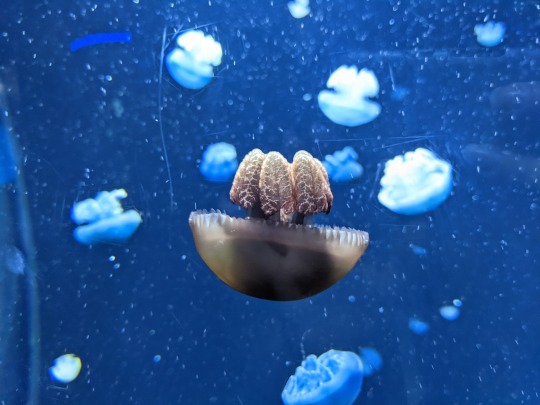

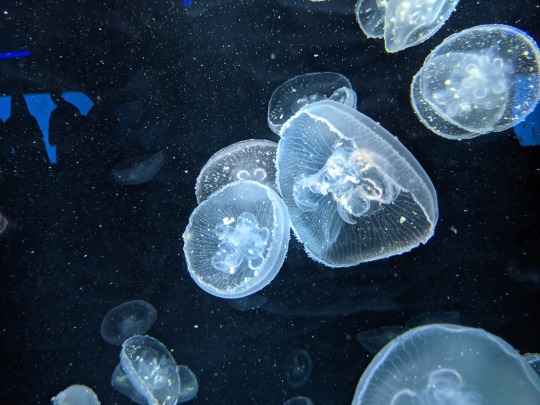


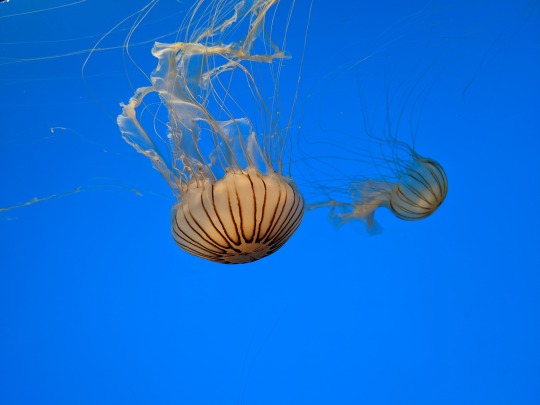




Baltimore National Aquarium Part 4/7
#baltimore aquarium#National Aquarium#Jellyfish#Blue Blubber Jelly#Upside-down Jelly#Moon Jelly#Northern Sea Nettle#Atlantic Bay Nettle#irl#real life#nature#photography#5.19.2021
17 notes
·
View notes
Text
northern sea nettle! (chrysaora melanaster)

some photos I took at the aquarium today















it was really busy and overwhelming but I had fun
my favorite part was the jellyfish 🖤
34 notes
·
View notes
Photo


Northern sea nettle (Chrysaora melanaster)
The northern sea nettle is a species of jellyfish native to the northern Pacific Ocean and adjacent parts of the Arctic Ocean.The medusa of the northern sea nettle can reach 60 cm in diameter with tentacles growing up to 3 m. The number of tentacles is up to 24 (8 per octant). It dwells at depths of up to 100 meters, where it feeds on copepods, larvaceans, small fish, large zooplankton, and other jellies. The sting is mild, although can cause serious skin irritation and burning. The lifespan is unknown
photo credits: marinespecies, Vincent Eisfeld
#northern sea nettle#Chrysaora melanaster#jellyfish#zoology#biology#biodiversity#science#wildlife#nature#animals#cool critters
272 notes
·
View notes
Photo

6 notes
·
View notes
Text
northern sea nettle! (chrysaora melanaster)

lions mane jellyfish! (cyanea capillata)

pacific sea nettle! (chrysaora fuscescens)

Jellyfish are gorgeous, aren't they?

They are very graceful as they undulate...



Sooooooo lovely...

They come in so many colors and different sizes... the ballerinas of the deep... 🪼
35 notes
·
View notes
Text


Jellyfish identification reddit my beloved (<- and JellyfishWarehouse my beloved)
#I'm honestly not the best at differentiating between different species but it's ok :)#tbh i'm not 100% sure that the jellyfish was a chrysaora pacifica bc there's usually some reddish pigment in there#but#it's the closest one we've got and the most popular ones kept in aquariums#someone else mentioned the chrysaora quinqincirreha(?) and that seems like a likely option#though usually it is ghostly white and doesn't have the same striking stripes that the image does#it reminds me more of the sea nettles that are found around parts of Africa but I haven't done enough research on them to be 100% sure#chrysaora pseudocelata is such a funny name to me tho#um#anyways I should rly learn how to differentiate octants in a jellyfish#because that's like the number 1 way to differentiate between species#they are radially symmetrical so they have 8 parts#number of tentacles is surprisingly important too#the chrysaora pacifica (japanese sea nettle) has 40 tentacles while the chrysaora melanaster (northern sea nettle) has 24#the difference is also pretty staggering with the closely related chrysaora achlyos and chrysaora colorata (black sea nettle and purple str-#-iped sea nettle respectively). can't remember which one has more but my bet is on the c. achlyos#mun rambles#jellyfish#chrysaora pacifica
5 notes
·
View notes